
In their quest for health, wellbeing, or even the development of esoteric powers, many of our contemporaries are turning their attention to various Eastern practices, particularly yoga.
Yoga is advertised as a method that will help prevent illness, recover from illnesses that have already begun—even those that don’t easily yield to treatment; that will teach one to gain self-control and to influence others; and that will confer an influx of vitality.
The majority of people are attracted to the external (so they think) aspect of yoga that improves health—therapeutic postures, cold baths, cleansing enemas, special breathing techniques and so on. The improvement of the working of one’s internal organs and system—digestion, potency, blood pressure, memory, and other organs—is set as the target. The average person believes that you can ignore yoga’s world-view and at the same time acknowledge its unique system of physical and mental development. Contemporary yoga uses traditional Hindu physical exercises—hatha yoga—similar to the physical exercises of the Chinese and ancient Persians. One also comes across such schools as raja-yoga and mantra-yoga—to which “transcendental meditation” is related, mystical Taoism, the methods of Tibetan Buddhism, breathing techniques and so on.
What, however, does this wisdom of sunny India have in store for us?
Yoga is a component of the philosophical-religious teachings of ancient and medieval India. It is a system of exercises, methods and techniques, the aim of which is not only to control the psychological and physiological processes of one’s system, but also to rise to a special spiritual state. Initially, the goal of yoga’s system of psychophysical exercises was to develop the soul’s independence from the body, so that after the person’s death the soul would avoid reincarnation and would dissolve into the primordial impersonal spiritual substance.

The physical exercises developed in yoga, in point of fact, are religious rites that open a person up to meet Hindu “spirituality.” Yoga exercises in their direct application are tied to occult meditations, while various yoga postures identify a person with animals or even objects (for example, “the cobra posture,” “the cow’s head,” “a dog muzzle down,” and others). As a rule, special motions of the body, physical postures, holding the breath, and repetition of mantras are used, as well as visualization—a method of working with the imagination where a person closes his eyes and mentally draws some image in the darkness, and eventually he sees the thing that he has imagined very vividly and distinctly. Some poses arouse the sexual centers, in order to make use of sexual energy, to transform it and distribute it throughout the whole body to improve health and to invigorate.
Unfortunately, few people know that religious faith and morals are deeply interconnected with outward rites and practice, so that it is impossible to use some kind of practice by itself without experiencing the influence of the spiritual essence that this practice expresses. Even outward motions may contain a definite formula-sign, communicating to the soul the corresponding state of mind of the Hindu religion. The Hindu-occult or Eastern systems offer their psycho-technical techniques, aimed at the "expansion of consciousness," "extrasensory perception," and the "opening of internal space." However, the true aim of all these types of yoga is to uncover one's hidden "divinity," to merge with the first-reality and thus bring forth in oneself supernatural spiritual powers. Here is how the well-known French apologist for yoga, Jean-Marie Dechanet, who had nominally belonged to the Catholic Benedictine order, openly acknowledged this in his book Christian Yoga: “The aims of Indian yoga are spiritual. It is tantamount to treason to forget this and to keep only the physical side of this spiritual teaching, when people see in it only a means for bodily health and beauty…. The art of yoga consists of immersing oneself in complete silence, of casting off from oneself all thoughts and illusions; of rejecting and forgetting about everything but one truth: the true essence of man is divine; it is God—one may only dream about the rest.”i
In Hinduism, the idea that man is divine in and of himself has attracted many: that all perfection is built into him, and that one may uncover it with the help of special methods. And it means that the laborious path to God through the overcoming of one’s passions that Christianity presents is not obligatory at all. All one has to do is bring to light one’s hidden divinity. It is interesting to note that one of the most common mantras in India is “so-kham, so-kham,” that is, “I am He, I am He.” As is well known, a feeling of one’s own significance, self-sufficiency, together with a feeling of euphoria—delight in oneself, is called “prelest” in Christian ascetic practice—that is, delusion, self-deception. A man imagines himself to be divine, but in reality he remains without God, while the dark forces flatter his pride with the imitation of divine perfections. It is a repetition of the ancient temptation to become “as gods” (Gen. 3:5), to acquire divine knowledge and powers, which the invisible seducer constantly whispers in our ears.

The woman became more and more carried away with Eastern spirituality, and reached—as it seemed to her at that time—no little success. Once in a dream she saw two venerable Buddhist masters—mahatmas, who addressed her with these words, “You have already attained much. However, in order to come to complete perfection, there is only one thing left to do: renounce Christ.” The woman asked in amazement, “But what do I need to do that for—I thought that Christianity doesn’t contradict Buddhism…” Like many of our contemporaries, she supposed that the various religions, even though they are different, were all equal ways to God, but in her heart she revered Christ.
The woman intuitively felt that there was something wrong, strange, and bad. The night visitors answered, "You need to do this in order to come to full perfection." Apparently, in her enthusiasm for Buddhism, she had not penetrated very deeply into its philosophy, where renunciation of all desires and attachments holds a key position. It would follow that one of these attachments is also one’s attachment to Christ.
"No," said the woman, "I can't deny Christ."
"Oh! Then in that case," the visitors unexpectedly reacted, "we're going to torment you!" At that moment both of them took on the sinister appearance of demons and began to throw burning coals at the woman's head.
Of course, you can write such a vision off as simply a nightmare. But the tortures themselves were perceived as so vivid that the suffering woman started to cry out. Her mother heard her daughter's cries, and seeing that something bad was happening, called an ambulance. The doctors tried in vain to give the suffering young woman an injection—her muscles were so taut that the needle wouldn't penetrate. Through the tortures in her sleep the woman recalled one simple Christian prayer: "Lord, have mercy!" and the demons with their torments disappeared in an instant. When she had come to and had drunk some holy water, she realized that she had to go to church for spiritual help. When the priest had delved into the woman's condition, he recommended that she confess and receive Holy Communion every week.
Her spiritual condition gradually improved.... only one peculiar thing began to happen after the events that night: from time to time the woman would see demons. Once she ran into an acquaintance of hers, who began to enthusiastically tell her that she had become interested in Buddhism, and that it was all fascinating and just wonderful. Having learned better from bitter experience, the woman wanted to warn her right then and there against getting carried away with it, but she had hardly started to open her mouth when she saw two sly demons on her friend’s shoulders who nimbly stopped up her ears, smirking, as if to say, “We’ll see what success you’ll have.” The woman realized that nothing that she said now would get through to her friend.
Indeed, people often get so enthralled by Eastern practices that they won't listen to any arguments, and only the school of hard knocks makes them reconsider their lives.
Unfortunately, many people suppose that the teaching of Buddhism coincides with the Christian teaching on a whole range of issues, let's say, in the overcoming of passions, the eradication of sinful desires, on self-perfection, love towards one’s neighbor, and self-sacrifice. However, the outward resemblance often conceals an abyss, and any who want to leap in and unite what cannot be united, fall into it and crash. I would like to cite the reflections of Prince N.S. Trubetskoy, a researcher into the religions of India, about that outward similarity and the deep inner difference that is observed between Buddhism and Christianity:
“The way that Buddha showed to Nirvana was twofold. On the one hand, psychophysical exercises of self-immersion, concentrated meditation, holding the breath—in their techniques, almost identical to the system of yoga. But on the other hand, self-sacrifice and love towards all existence. However, this second way is, so to speak, a part of the first, especially psychophysical exercise. Love, mercy, compassion—all these for the Buddhist are not feelings, for feelings must not remain in his soul, but only results, the consequences of the complete loss of his feeling of individuality and of his personal wishes. In such a mental state, it doesn’t cost a person anything to sacrifice himself for his neighbor, for, not having his own desires, he naturally fulfils the desires of others easily. To suppress one’s will so much that one does the will of another exclusively is recommended precisely in the form of an exercise. Forgiveness of all is looked upon as a means of obliterating the feelings. Apathy or indifference reaches perfection when a person relates to his enemy in the same way as to his friend; when he is indifferent to joy or to pain, to honor or dishonor."ii
In other words, such a person becomes like a robot, which has neither a personality nor feelings, and therefore impassively fulfils whatever program is installed on it. In contrast to this, Christian sacrifice, forgiveness, and love are based not on the suppression of desires within oneself, not on the annihilation of one's personal authority, but on the purity of a heart that has acquired God's grace. The soul that has found in God freedom from sin joyfully helps its neighbor; it forgives and makes sacrifices because it loves—in this lies its secret happiness.
Coming back to yoga, we notice that breathing exercises and bodily postures prepare a person for definite spiritual experiences. We repeat, that the true goal of yoga is religious-ascetical. Yogis themselves consider that on the highest steps of this ascetic practice, when all mental processes stop and a person reaches samadhi—that is, a state of concentration without content, that "the seeds of karma burn out in him", and this frees him from a new re-birth; it allows him once and for all to be freed from the body and to stop his existence as a person. Here we see the fundamental divergence from Christianity, in which personality is not annihilated, but transformed and reaches its highest self-expression in communion with God.
In accordance with Christian teaching, gifts—given to a concrete person—are manifested in the soul that has united itself with God. And even in the age to come, after the general resurrection, when God "will be all in all" (I Cor. 15:28), personality is not annihilated, for—as it says in Scripture—we will see God "face to face" (I Cor. 13:12), that is, communion with God is always a deeply personal communion, which does not become impersonal even in common prayer in church. This experience is available to every Christian here and now, to a greater or lesser extent. And in this personal meeting with God as Life, Love, and Joy, our own life becomes more genuine, inwardly rich, inspired, and vivid.

If prayer is an appeal to God, then meditation is a conversation with one’s own self—in point of fact, self-hypnosis. It is supposed that meditation awakens deep forces that are sleeping in the depths of the soul of the person who is meditating, and that such a person becomes capable of, for example, clairvoyance. If in Christianity there exists “mental activity” and the Jesus Prayer, in which the Christian with all his being turns to God and His mercy, then in occultism and the Eastern practices a person seeks by means of meditation a secret entrance into his own self, leading to spiritual perfection. In Hindu meditation a person aspires to identity with the absolute, and, achieving a trance, arrives at the impression that he is one with the deity—or more exactly, that in his very self the primordial divinity has been revealed.
Meditation, as an experience of non-Christian religious-mystical practice, naturally involves spiritual states outside of Christ and without the communion of His grace. Sooner or later, it may seem to such a person that he himself is becoming a vehicle of the highest revelations, performing a special mission on earth. It brings to mind the example of the Indian poet and mystic, one of the founders of Bengali Krishnaism, Chandidas (14th-15th centuries), who was consecrated from his youth as a priest of the goddess Durga. A representative of the highest caste of Brahmans, Chandidas fell in love with a woman of a lower caste, the simple washerwoman Rami. For a Brahman, maintaining the purity of the caste was a sacred duty. Chandidas sought a resolution to his personal problems in meditation and inner appeal to the goddess Durga. In doing this he began to contemplate his beloved, and in such meditations Chandidas acquired the certainty that he himself was the manifestation of the spirit of Krishna, and that Rami was the incarnation of Krishna’s beloved, the shepherdess Radhi. Chandidas believed that the goddess Durga had revealed this secret to him. This is how occult spiritual practice achieves occult revelations.
Do yoga and meditative practice bring people some kind of result? Often, representatives of these practices testify that yoga counterbalances inner forces and calms the nervous system. But as a result, the person ceases to feel any pain in his soul. He does not feel any kind of contradiction in his soul, and does not feel the need to confess his sins. Thus, the tranquility reached by means of yoga and meditation deprives a person of the possibility of repenting of his sins and being freed from them. The person has attained emotional comfort, but in the depths of his soul there remain unconfessed sins that he simply does not remember. In actual fact, emotional instability in our real life may be an indicator prompting us that we need to hurry to church to the Sacraments, to repent before God, to correct ourselves. But yoga, with its meditative practice, deprives the soul of this indicator.

As for the seemingly evident physical benefit of practicing yoga—this is a commonly held delusion. The benefit of the simplest yoga exercises is observed to be not greater than that of any other athletic systems. If you take up yoga seriously it becomes harmful to your health, and those who believe that Indian yogis live long lives and don’t suffer from serious illnesses are seriously mistaken. In India in the 1980’s, a general medical examination was carried out, which showed that on the average, a yogi has an even shorter lifespan that an ordinary inhabitant of India. The yogi in fact suffers from a multitude of ailments—for example, of the upper respiratory tract and the digestive tract, because every day they cleanse the nasopharynx with threads and give themselves enemas, and over time the mucous membranes in the nasal cavity and intestines are damaged. They also suffer from dislocated joints, various forms of arthritis and arthrosis because of being so frequently in unnatural postures, and get eye cataracts because they often concentrate their attention on the sun. A good many were found who suffer from chronic venereal diseases.
Because emphasis in yoga is given to the restructuring of one’s system and its rhythms, this may ruin the biological processes in such a way that the psychosomatic disorder becomes irreversible, and not a single doctor will be able to tell what happened to the person.
In conclusion it must be said that in all the mystical-occult systems, practices, and meditations one may run across any reflection, thought, or idea except one—repentance. There is no repentance in them. Christianity attests that the closer the soul comes to God, the more clearly the person sees his imperfection and inadequacy. Therefore, the experience of drawing near to God confirms a Christian in humility, repentance, and love. Thanks to this, the pure, sincere joy of unity with the Lord, Who sees, hears, and loves you, becomes possible. But the Eastern mystical experience rejects the personal God, and therefore strives for the overcoming of man’s personality in samadhi or nirvana, giving one the feeling of the dissolution of his individuality in the ocean of the impersonal. Not having met the personal God, in Eastern mysticism a person naturally aspires to personal death.
i1 Dechanet, Jean-Marie. Christian Yoga. New York: 1972, p. 54, 63.
ii Trubetskoy, Prince N.S. Christianity and the Religions of India. Moscow: Sretensky Monastery. 2000. Pp. 38, 39.

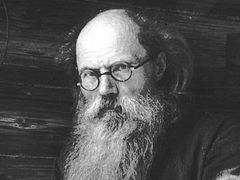
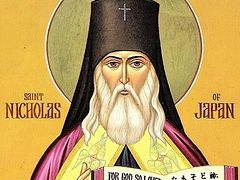
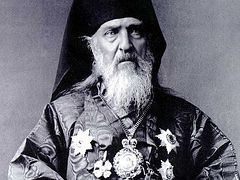

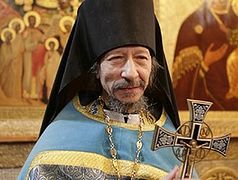
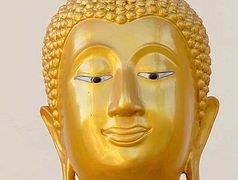
I kinda don't agree with meditation part, at least not when 'meditation' as understood today in buddhism and on the west - as being mindful at all times and do everything with full concentration, realizing the feelings, etc. It's very similar to what fathers wrote in Philokalia for example when it comes to prayer, if you pray - be 100% mindful and present, don't wander around in your mind.